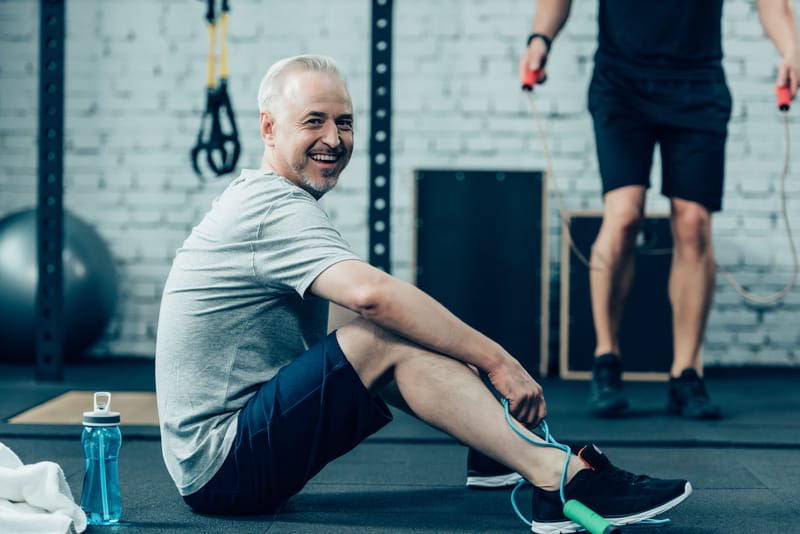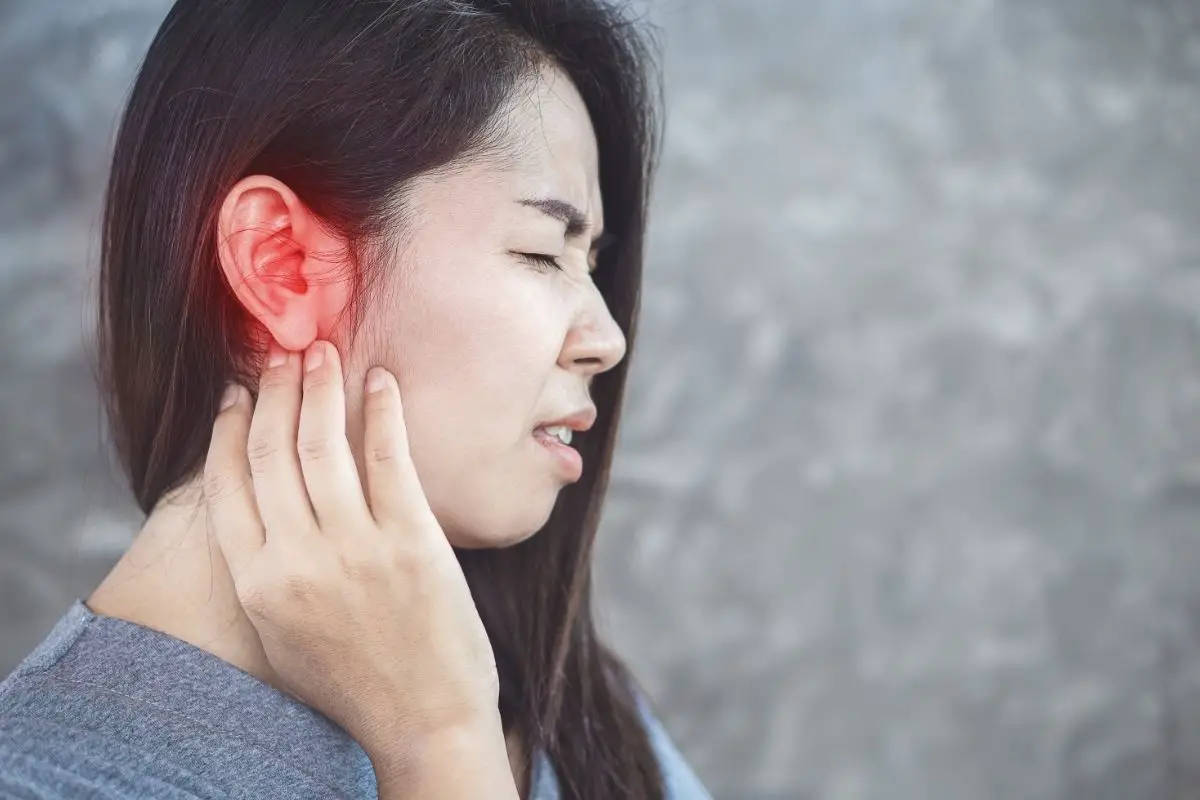Wrist tendonitis may sound like a medical condition that only the old suffer, but really, it can happen to anyone who strains the muscles on their hands so much. Tendonitis hurts so bad when it happens, and it takes time to heal, but if you understand exactly what causes wrist tendonitis and know how to use acupuncture for wrist tendonitis, you surely would not have to be scared of tendonitis again.
Tendonitis, as the name implies, is an issue that happens to the tendons. The tendons are like strong wires that join the muscles to the bones in your joints. This means that wherever you have a joint on your body, you have tendons there, and there is a chance of that part of your body having tendonitis.
To demystify this condition, tendonitis is simply the inflammation of the tendons in your body, which can cause swellings on the affected region, severe pain, and great discomfort. Sometimes, the inflammation may happen on the protective covering of the tendons rather than the tendon. In this case, it is tenosynovitis rather than tendonitis. Other times, both this protective covering and the tendons get inflamed.
Mostly, you get tendonitis and tenosynovitis from straining your muscles too much, a bad injury, or excessive exercise. For some other people, it happens as a complication from diabetes, infection, or rheumatoid arthritis. Whichever is the case, you know you have tendonitis when it becomes difficult to move your joints; there’s swelling, heat, and redness around your joint; or a grating sensation when you move your tendon.
Trust me, at any slight feeling of any of these in the wrist, massage the acupuncture for tendonitis I’ll be sharing in this article, but before that, let’s explore some more on tendonitis.
What Are The Types Of Tendonitis?
Remember that tendonitis can happen anywhere there’s a joint? Well, these are the most popular kinds of tendonitis that you should be wary of.
1. Lateral Epicondylitis: This tendonitis happens in the backside of the elbow and forearm and causes immense pain. Most people refer to it as tennis elbow, and it happens when you damage the tendons that allow the wrist to bend backward from the palm. For tennis elbow, you should use acupuncture for elbow tendonitis.
2. Medial Epicondylitis: This kind of tendonitis is similar to tennis elbow, only that it causes pain on the front side of the elbow. It is caused when you bend your wrist forward towards your palm. This is also called Golfer’s elbow and you need acupuncture for bicep tendonitis for this.
3. Rotator Cuff Tendonitis: This kind of tendonitis happen in the shoulder. It is a shoulder disorder that causes inflammation in the tendons of the shoulder. If this is your present condition, then you should use acupuncture for shoulder tendonitis.
4. DeQuervain’s Tenosynovitis: Remember that tenosynovitis is the inflammation of the protective covering or sheath of the tendons? Yes, this kind of tenosynovitis affects the tendon sheath of the thumb. It is the most popular kind of tenosynovitis.
5. Trigger Finger: This kind of tenosynovitis can affect any finger, causing it to lock suddenly, in which case you cannot flex it. When this occurs, it’s said that you have a trigger finger. You can try acupuncture for tendonitis in hand for this.
Can Acupuncture Help Wrist Tendonitis?

Yes, acupuncture can help wrist tendonitis and this is how. First, tendonitis occurs from repetitive movements. When you repeat the same movement repeatedly, the affected muscles become fatigued and grow stiff. The implication is that the blood supply to that part of the body is reduced, which then causes numbness and pain.
When you then apply acupuncture and moxibustion to this area, the stiff muscles are softened, and the heat generated from the exercise warms it up and improves the flow of blood, thus eliminating the pain and numbness. This works like magic every time. You should also see these acupuncture for tendonitis in the knee.
What is more interesting is that there are scientific proofs that acupuncture can help different kinds of tendonitis and tenosynovitis. One such study conducted on 30 patients performed acupuncture therapy on acupoints LI-5, LU-7, and LU-9 and concluded that acupuncture treatment is a fine alternative treatment for De Quervain’s tenosynovitis.
Another research confirmed that acupuncture and moxibustion (AM) when used to treat De Quervain’s tenosynovitis help to improve the local blood circulation of the lesion and assist in repairing the muscles, tendons, and other soft tissues. According to the research, AM may just be more beneficial in treating De Quervain’s tenosynovitis than other traditional treatments.
Acupuncture Points For Wrist Tendonitis
Before we proceed to discuss the acupoints to massage when you have tendonitis and tenosynovitis, you should know what Traditional Chinese Medicine believe causes tendonitis. In oriental medicine, it is believed that tendons and tendon sheaths form part of the muscle, and the muscle is governed by the liver, one of the five organs of the body. Because the liver stores blood, it is responsible for the blood sent to the muscles. Poor nutrition and unsteady emotions would cause the liver to become stagnant. When this happens, blood flow to the entire body is disrupted, the muscles lose their flexibility, and tendons are lost.
When this becomes the case, and you notice that your wrists are inflamed, it’s time to fall back to the following acupuncture points for wrist tendonitis.
Acupoint: LU-9 (Other Names: Lung-9/Tai Yuan/Supreme Abyss)
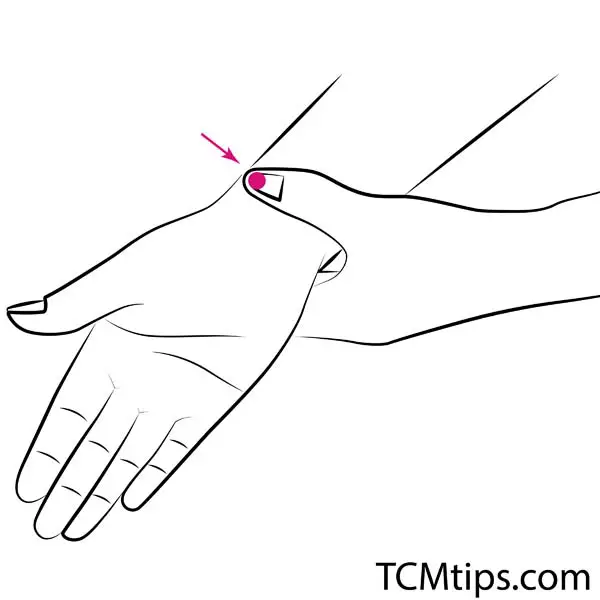
The first acupuncture for wrist tendonitis is LU-9. This Lung meridian acupuncture point that is known as Taiyuan in Chinese, is located on the wrist. To locate it, face your palm upwards, then trace the side of your thumb to the wrist crease, at the point where your artery pulsates. That point is LU-9.
In Traditional Chinese Medicine, it is believed that LU-9 helps to resolve phlegm problems, tonify the Lung Qi and Yin, and improve the pulse. For this reason, LU-9 is well suited to treat medical conditions like cough, asthma, cols, and hiccups, in addition to wrist pain. It is one of the acupressure points for hives.
Once you stimulate LU-9, it works to relieve the stiffness in your hands to enable you to move your fingers easily.
Acupoint: LU-7 (Other Names: Lung-7/Lie Que/Broken Sequence)
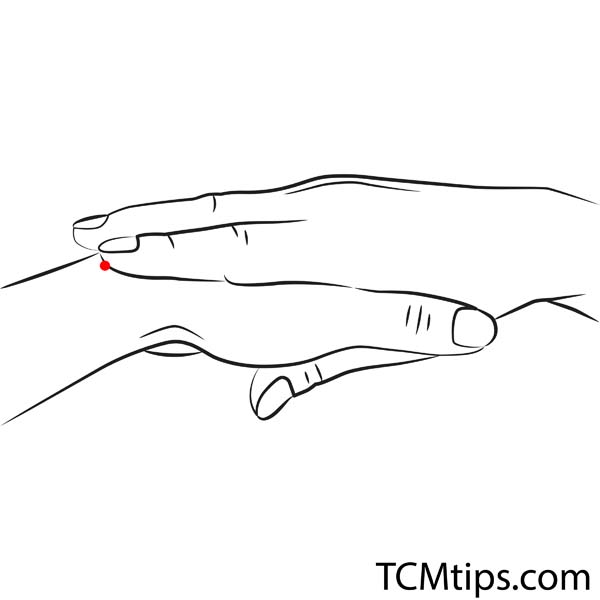
LU-7 or Lieque, as it is called in Chinese, is the next acupuncture point for wrist tendonitis. Like the acupoint before it, LU-7 is also located on the arm, just not on the wrist this time. The best way to locate Lieque is to interlock your index finger and your thumb together. The point between the sinew and the bone, in the inside of your hands where the tip of the index finger touches is LU-7.
In Traditional Chinese Medicine, it is believed that LU-7 packs loads of benefits for the head, neck, and bladder, as well as helps in expelling exterior wind. Therefore, in addition to bringing pain relief to tendonitis, you can also use it to treat head and neck issues like migraines, rigid neck, sore throat, and cough. If you have asthma, LU-7 is one of the acupressure points for asthma that you should massage.
When paired with KID 6, it does even more wonders – you can use it to treat gynecological and genitourinary issues.
Acupoint: LI-7 (Other Names: Large Intestine-7/Wen Liu/Warm Flow)
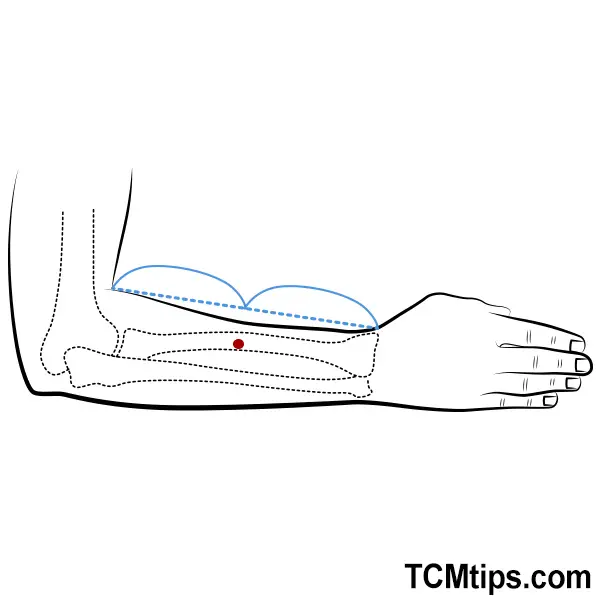
The third acupuncture for tendonitis in the wrist is LI-7, an important Large Intestine meridian acupuncture point. In Chinese, this point is referred to as Wenliu, which means Warm Flow. Like the other acupoints mentioned so far, LI-7 is also located on the arm. To locate it, bend your elbow, then place your last finger at the edge of the crease formed at the outside of your hand. The point six finger-width or 7 cun from the edge of the inner elbow crease is LI-7.

This acupoint functions as a remover of heat and expeller of wind in Traditional Chinese Medicine, in addition to benefitting the throat. Hence, LI-7 is used clinically to bring pain relief to acute abdominal pain and shoulder ache. If you have DeQuervain’s Tenosynovitis, LI-7 is the right acupoint to stimulate. It also helps face paralysis and reduces the swell of the swollen face as well as serves as acupressure for inflammation toothache.
Acupoint: LI-6 (Other Names: Large Intestine-6/Pian Li/Diverging Passage)
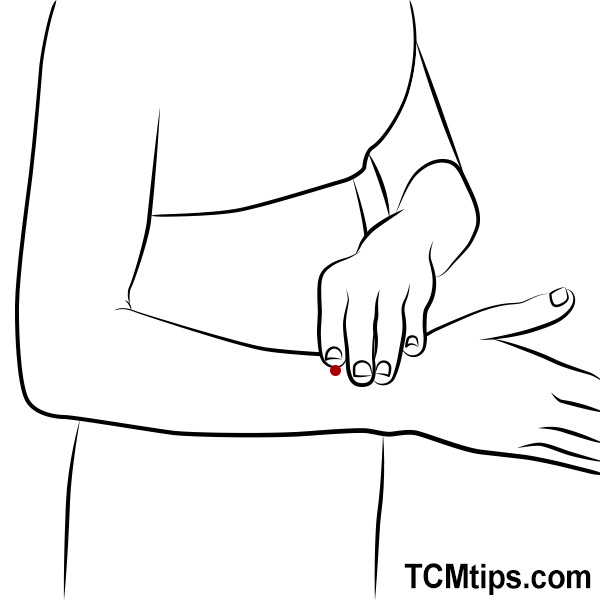
The next acupuncture for wrist tendonitis, LI-6, is also a Large Intestine meridian acupoint and it is located on the arm. To locate LI-6, or Pianli as it is called in Chinese, flex your elbow still. The point two finger-width, or 3 cun, above the wrist crease, on the same line as the outer edge of the elbow crease is LI-6.
In Traditional Chinese medicine, both LI-7 and the next acupoint we’ll be discussing, Ren-6, are pain relievers. They are used clinically to treat chronic pain in the hand, edema, dental cavities, and facial paralysis. LI-6 is also effective in treating DeQuervain’s Tenosynovitis.
Acupoint: Ren-6 (Other Names: The Conception Vessel-6/Qi Hai/Sea of Qi)
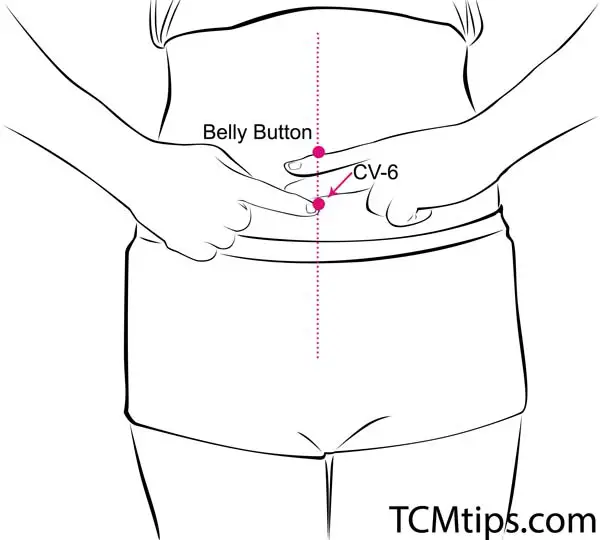
Finally, we have arrived at the last acupuncture for wrist tendonitis – Ren-6. This special acupoint, called Qihai in Chinese, is unlike the other acupoints listed so far in that it is located on the belly. You’ll find Ren-6 about two finger-width, or 1.5 cun, below the belly button.
Its location makes Ren-6 a useful acupoint for the treatment of hernia, abdominal pain, diarrhea, and constipation. It also works as one of the acupressure points for heart valves. This acupoint is not called the Sea of Qi for nothing.
In oriental medicine, Ren-6 functions as an invigorator of the kidney Qi, a regulator of Qi, and an overall improver of Qi. Properly massaging Ren-6 will restore your blood flow and bring back flexibility to your muscles and tendons.

Try our Anti-Aging Gua Sha Tool designed to bring out your skin’s natural glow.
Best Gua Sha Product- Anti-Aging: The tool is designed to target 11 specific aging signs such as wrinkles and sagging skin. By following the 7-step routine, users can improve skin firmness and reduce fine lines naturally.
- Enhances Skincare Routine: It works effectively with serums and lotions, boosting absorption and efficacy of skincare products.
- Visible Skin Improvement: Users can expect a smoother complexion, reduced puffiness, and a more youthful appearance.
 P. Sze
P. Sze 

